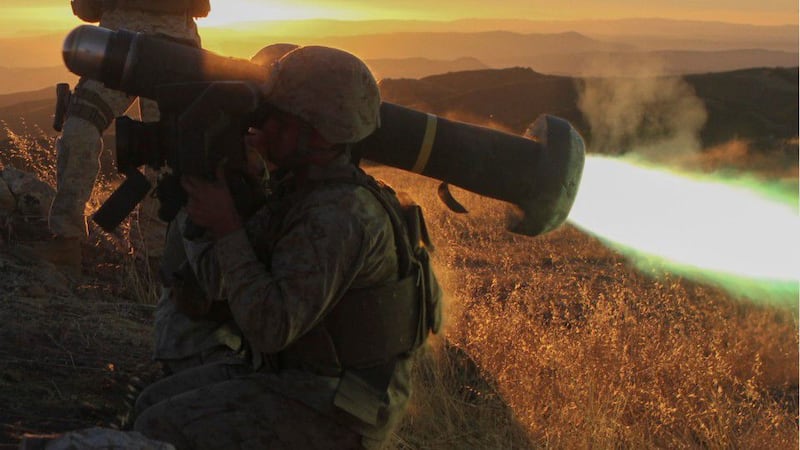The United States, along with NATO allies and other countries, have been providing Ukraine with weapon systems in its fight against the nearly three-week Russian attack.
While the Pentagon would not confirm the numbers, its believed that Ukraine has been sent more than 17,000 Javelin anti-tank weapons. While at least two government officials said the country was also getting Stinger anti-aircraft systems, the Pentagon has not confirmed that the weapons have been sent to Ukraine.
Politico reported that a senior defense official would “only say that we continue to provide Ukraine the systems that they need to defend themselves, and that includes best systems and weapons that they can use to deal with threats on the ground, as well as airborne threats, and that is as far as I’m going to go.”
A report in The Washington Post said that the Biden administration is working with European allies to send more sophisticated air-defense systems along with other armaments into the Ukrainian war zone.
So what are the Javelin and Stinger missile systems?
Here is what we know about them now.
The Javelin system
The anti-tank weapon is a shoulder-mounted system that can be operated by one person. The missile that is launched is accurate and deadly and is guided to its target by a computer.
The system, which can shoot two missiles per minute, was developed and produced for the U.S. Army and U.S. Marine Corps through a joint venture between Lockheed Martin and Raytheon.
What else does the Javelin system do? Here are some highlights of the system.
The Javelin:
· Allows the target to be identified by either visual methods or through a thermal picture that directs the missile. It can target any vehicle that emits heat.
· Is a “fire and forget” system, mean it allows the person who launches the missile to either load another missile to be launched or take cover as the missile is heading to its target.
· Comes out of the launch tube before the primary flight motor ignites. Once the primary motor ignites, the Javelin is sent toward its target.
· Uses an arched top-attack profile, according to Lockheed Martin. The missile climbs above its target for improved visibility and then strikes where the armor is weakest.
· Is fired when the gunner places a cursor over the selected target and the launch unit sends a lock-on-before-launch signal to the missile. The computer guides the missile once it is launched.
· Can be fired from within buildings or bunkers.
· Is effective from 71 to 4,374 yards in most operational conditions.
· Uses a tandem warhead. The first part either creates a path into the armor of a tank or blows the outer layer of armor up, then the main warhead enters the path and explodes, destroying the vehicle.
The Stinger system
The Stinger missile, officially known as the FIM-92A, is a man-portable air-defense system (MANPADS). It gives ground troops a way to destroy helicopters or low-flying planes.
The Stinger has a small launch rocket that shoots a missile out of a launch tube. The launch engine then falls away and the main solid rocket engine ignites. The rocket engine sends the Stinger toward its target at approximately 1,500 miles per hour.
The missile system is one that has been around a while. It was developed in the 1970s.
What else does the Stinger system do? Here’s a look at the specifics of the system.
The Stinger:
· Is about five feet long.
· Can be launched by one person.
· Can be mounted on a ground vehicle.
· Uses an infrared seeker to find a target engine’s exhaust.
· Is effective against planes or helicopters flying below 11,000 feet.
· Is lightweight, with the missile and launcher together weighing about 35 pounds.
· Has a launcher that is reusable.
· Like the Javelin, is a “fire-and-forget” weapon. To launch, a person simply points it at the target, and when the seeker locks on, pulls the trigger.
©2022 Cox Media Group








